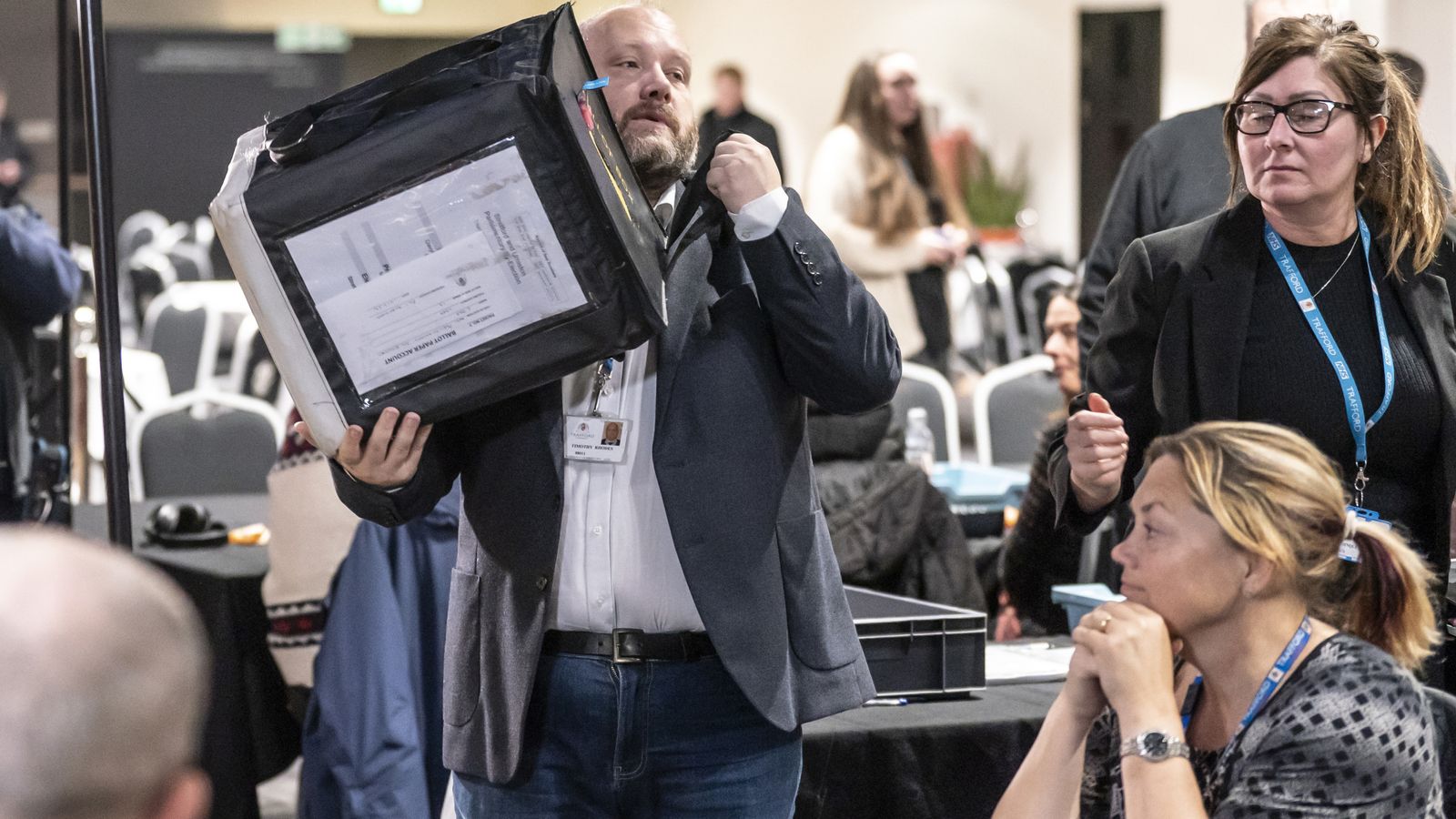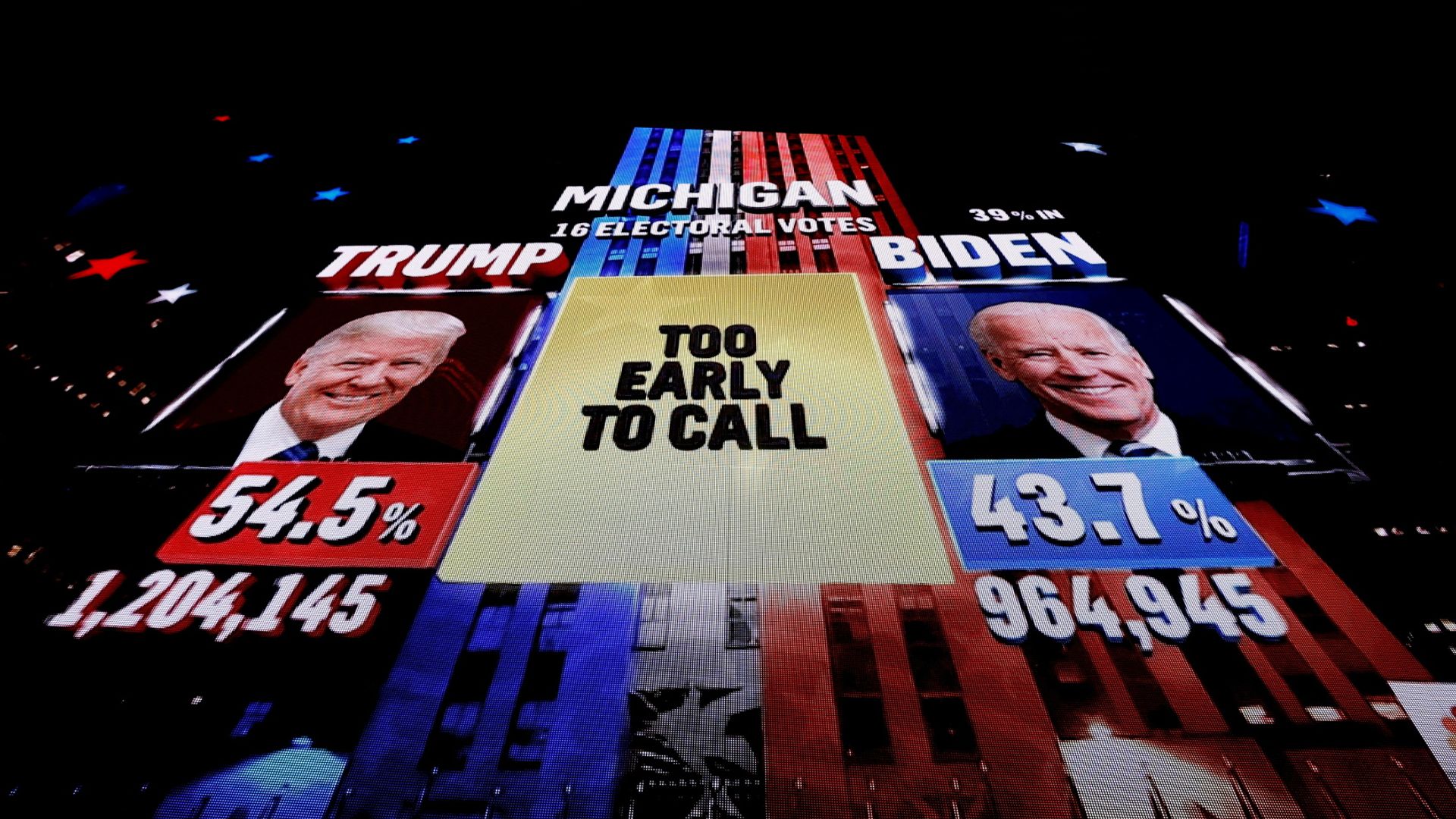Labour easily retained its Stretford and Urmston seat, considerably increasing its percentage majority over the Conservatives.
Compared with the general election, Labour’s vote share rose from 60.3% to 69.6%, a nine-point increase.
The Conservative share collapsed from 27.5% to just 15.9% although the party did avoid the complete humiliation of dropping into third place.
Because of the dramatic fall in total votes cast, over 50,000 votes at the general election, under 20,000 now, it makes sense to focus on Labour’s percentage majority over the Conservatives.
This went from 33% to 54%, a 21 point increase that ensured Labour’s victor, Andrew Western, now sits on a comfortable majority at the next general election and beyond.
The Conservative to Labour swing is 10.5, lower than the 13.6 recorded in Chester two weeks ago but impressive enough given that Stretford and Urmston is a much safer seat, making it harder for Labour to squeeze the Conservatives.
The comparison with Chester, a by-election result that made us contemplate the chance of an outright parliamentary victory for Labour, is a fair one.
No ‘Fergie time’ needed as Reds cruise to victory in Stretford and Urmston by-election
Labour secures comfortable win in Stretford and Urmston by-election
Strikes and the unions: How have they changed?
The Conservative by-election share fell to 58% of its 2019 vote share in both Chester and Stretford & Urmston.
Sitting Conservative MPs doing the same calculation for their own constituencies, even those in so-called safe seats, will know they face a rough journey between now and their next encounter with the electorate.
Those backbenchers are led by Sir Graham Brady whose own seat, Altrincham and Sale West is close by, falls on a swing half that recorded yesterday.
Labour has cause to celebrate not just the victory but also its manner. All seven of the remaining candidates lost their deposits.
Beforehand, there was fanciful talk that the Lib Dem candidate, who’d stood twice before in the Stretford & Urmston constituency, might become a halfway house for disgruntled Conservatives, unhappy about switching straight to Labour.
In fact, the Lib Dems came fourth behind the Greens and only nine votes ahead of the Reform UK candidate.
This detail matters to Labour. At the last general election, Labour finished in second place in 275 of the 365 constituencies won by the Conservatives.
The more the party demonstrates that in a year or two the effective choice for voters wishing to oust the current government is to vote Labour then the more chance it has of achieving what history suggests is a most unlikely outcome – an overall majority in the House of Commons.
The fly in the ointment is the dramatic fall in voter turnout. This fell by almost 44 percentage points, to a miserly 25.7% after disregarding the 57 rejected ballot papers.
This is not the lowest by-election turnout since the war. That “honour” remains with Manchester Central where only 18.1% of the electorate turned out in November 2012. But Stretford & Urmston does move into seventh spot on the list.
Two immediate explanations for the low turnout come to mind.
It is true that seasonal factors affect by-election turnout. Since the war, turnout has fallen more in contests held in December than in any other month – an average 22-point decline.
Voters visiting polling stations yesterday in the Greater Manchester area faced sub-zero temperatures, enough to dissuade anyone reluctant to brave the outdoors. In nearby Wigan, a council by-election there saw turnout fall to 5.3%, a new post-war record.
Then, there is the postal strike. In 2019, 14,520 postal ballots were counted in this constituency, 29% of the total votes cast.
Turnout amongst registered postal voters was 82%. Trafford council took steps to avoid disruption, establishing places in local areas where voters could drop off their ballots. But we may not learn how many took advantage of this arrangement.
Any significant disruption in the postal system, therefore, is likely to have impacted turnout.
Alternative explanations for the low turnout are available. One such might come from the Conservatives, who might contend that the fall in their vote is less about former supporters defecting to Labour but rather preferring to opt out of this by-election.
With more by-elections in the offing we may not have long to wait to test this explanation.











